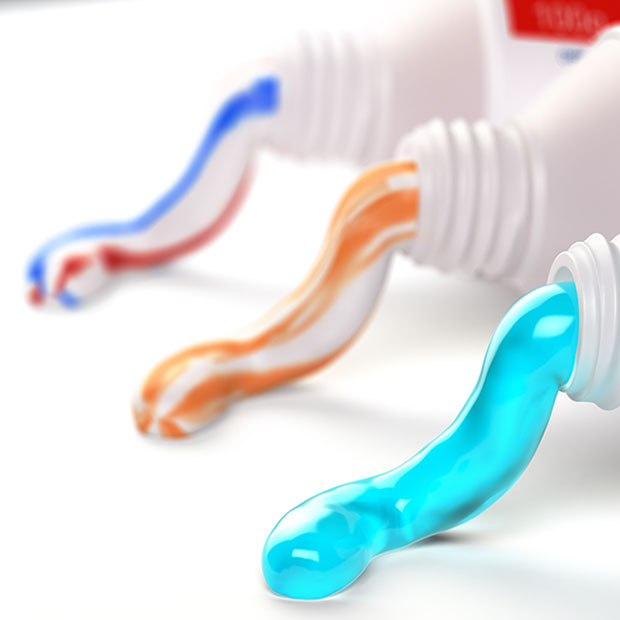Toothpaste’s Active and Inactive Ingredients

Now that you have braces, you’re probably paying more attention to your oral hygiene.
Choosing the right toothpaste matters even more during orthodontic treatment, when keeping your teeth clean becomes more challenging. Let’s break down what’s actually in that tube and how it helps protect your smile.
Active Ingredients: Extra Protection When You Need It Most
Active ingredients are the therapeutic components that actively work to protect your teeth. During orthodontic treatment, these ingredients become your allies in preventing problems.
- Fluoride is your most important partner right now. Listed as sodium fluoride, stannous fluoride, or sodium monofluorophosphate, fluoride strengthens your tooth enamel and helps repair early damage from acids.
- Why does this matter so much with braces? Those brackets create dozens of tiny spots where food particles and bacteria can hide, producing acids that attack your enamel. If you’re not careful, you can develop white spots. These are permanent scars on your teeth from mineral loss around brackets.
- Some toothpastes also contain antimicrobial ingredients that help reduce gum inflammation. This can be helpful since braces make your gums more prone to swelling and bleeding. However, these ingredients work best alongside thorough brushing. They can’t replace proper cleaning technique around your brackets and wires.
- If you develop sensitivity during treatment, some toothpastes contain potassium nitrate or stannous fluoride to help manage discomfort. New braces and wire adjustments can make teeth temporarily sensitive, and these ingredients provide some relief.
Inactive Ingredients: What You Need to Know
Inactive ingredients don’t fight cavities, but they affect how well you can clean around your orthodontic appliances and whether your toothpaste is safe for your brackets.
- Abrasives like hydrated silica, calcium carbonate, or dicalcium phosphate make up roughly half your toothpaste. These particles help scrub away plaque and food debris. This is crucial when you have all those nooks and crannies around brackets to clean. Most regular toothpastes have appropriate abrasiveness, but be cautious with heavily advertised whitening toothpastes.
- Here’s something to remember about whitening toothpastes: they only clean surface stains on exposed enamel. The tooth surface under your brackets won’t get whitened, which could leave you with uneven coloring when your braces come off. It’s better to wait until after treatment for whitening efforts.
- Detergents, typically sodium lauryl sulfate, create that foamy feeling when you brush. Humectants like glycerin keep toothpaste from drying out, while binders ensure all ingredients stay mixed together. Flavoring agents make toothpaste taste good, which matters more than you might think. If you hate your toothpaste’s taste, you’re less likely to brush as long or as often as you should.
Making Smart Choices During Treatment
Avoid charcoal toothpastes, which are trendy but often lack fluoride and may be too abrasive for orthodontic hardware. Skip novelty toothpastes that prioritize fun colors over proven ingredients. Stick with toothpastes bearing the American Dental Association Seal of Acceptance. This seal guarantees the product has met rigorous safety and effectiveness standards.
If you wear clear aligners like Invisalign, you have more flexibility since you remove them for brushing. However, you still need fluoride toothpaste to protect your teeth during this extended treatment period.
We Can Help!
Remember, even the best toothpaste can’t compensate for poor brushing technique. Take time to clean thoroughly around every bracket, use proper tools like proxy brushes or floss threaders, and brush after every meal. Your toothpaste provides the fluoride protection and cleaning power, but your technique determines whether you finish treatment with a healthy, beautiful smile or one marked by white spots and cavities.
